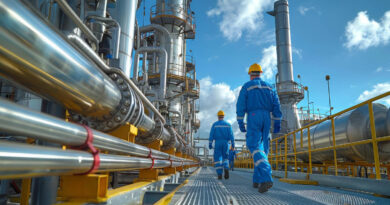Comprehensive Pigging Solutions for Pipeline Maintenance
In various industrial sectors such as oil and gas, chemicals, food processing, and pharmaceuticals, maintaining the functionality and safety of pipelines is a priority. Pipeline systems are integral for transporting liquids, gases, and other substances, but they can be prone to issues like blockages, corrosion, and buildup. To ensure continuous and efficient operation, pigging solutions are implemented. These solutions provide an effective and reliable way to keep pipelines running smoothly, minimizing downtime, reducing maintenance costs, and enhancing safety. This article delves into the different types of pigging solutions, their benefits, and their role in diverse industries.
What Are Pigging Solutions?
Pigging solutions involve the use of specialized equipment designed to clean, inspect, and maintain pipelines. A “pig” is a device that is sent through the pipeline to perform a variety of tasks, such as cleaning the inner walls, inspecting the pipeline for structural issues, or even separating products in multi-product pipelines. The name “pig” was derived from the sound that the device makes while traveling through the pipe, resembling a squealing noise. Pigging solutions are essential for pipeline systems to operate efficiently and to prevent issues that could lead to operational disruptions.
Pigging solutions can be customized to suit the specific needs of the pipeline, including its size, the materials being transported, and the environmental conditions. These solutions provide a practical, non-invasive method for addressing pipeline maintenance concerns, ensuring optimal performance, and extending the lifespan of the system.
The Importance of Pigging Solutions
In pipeline systems, operational efficiency is crucial. Even minor issues such as debris buildup or corrosion can cause significant problems, leading to slower flow rates, blockages, or system failures. Pigging solutions provide a cost-effective way to prevent such problems by proactively cleaning and inspecting the pipelines, addressing potential issues before they cause major disruptions. Regular use of pigging systems allows for consistent flow and prevents the need for expensive repairs or replacements.
One of the primary benefits of pigging solutions is the ability to clean pipelines without disassembling the system or halting operations. This is particularly important in industries that rely on continuous product transportation, such as oil and gas. Additionally, pigging solutions can help maintain product quality, as they prevent contamination by removing debris or residual materials in the pipeline.
How Do Pigging Solutions Work?
Pigging solutions work by inserting a pig into the pipeline, which is then propelled through the system, typically by the pressure of the fluid flowing through the pipe. The pig is designed to fit tightly against the pipe’s inner walls, enabling it to scrape away deposits, clean the interior, and remove unwanted materials such as wax, scale, and sludge. As the pig moves through the pipeline, it can also help push out any blockages or product residues that may be present.
The pig is launched from a specially designed pig launcher, and upon completing its task, it is received at the other end of the pipeline through a pig receiver. Depending on the complexity of the pipeline system, pigging solutions can be automated or manually controlled, and modern systems often include sensors to monitor the pig’s movement and performance in real time.
Types of Pigging Solutions
Pigging solutions come in various forms, each designed to meet the unique demands of the pipeline. Some of the most common types of pigging systems include:
- Cleaning Pigging: The primary function of cleaning pigs is to remove debris, sludge, wax, and other buildups that can obstruct the flow of materials through the pipeline. Cleaning pigs are typically made from flexible materials such as foam or rubber, and they are designed to scrub the pipeline walls clean as they move through the system. These pigs help maintain optimal flow rates and prevent costly blockages.
- Inspection Pigging: Inspection pigs are equipped with sensors, cameras, or other monitoring devices to inspect the internal condition of the pipeline. These pigs help detect issues such as corrosion, cracks, or wear, providing real-time data on the pipeline’s integrity. Inspection pigging is crucial for identifying potential issues early and preventing major failures that could disrupt operations.
- Intelligent Pigging: Intelligent pigging is a more advanced form of inspection pigging, incorporating sophisticated technology to gather and transmit data about the pipeline’s condition. Intelligent pigs are equipped with sensors that measure factors such as wall thickness, corrosion, and pressure, allowing for a comprehensive analysis of the pipeline. This type of pigging is particularly useful in industries where pipeline integrity is critical, such as the oil and gas sector.
- Separation Pigging: Separation pigging is used when different products need to be transported through the same pipeline but must remain separated. For example, in the oil and gas industry, different grades of oil may be transported in the same pipeline, and separation pigs create barriers between the products, ensuring they do not mix. This type of pigging also helps reduce contamination and maintain product quality.
- Batching Pigging: Batching pigs are designed to segregate different batches of material within the pipeline, preventing them from mixing. This solution is often used when multiple products need to pass through the same pipeline system in sequence, such as in the transportation of different chemicals or food products. Batching pigging ensures that the integrity of each product is preserved throughout the pipeline journey.
Conclusion
Pigging solutions are essential for maintaining the efficiency, safety, and reliability of pipeline systems across various industries. By offering cleaning, inspection, and maintenance capabilities, these solutions help prevent costly failures, improve operational efficiency, and ensure compliance with regulatory standards. Whether used in oil and gas, chemicals, food, or water treatment, pigging solutions are indispensable for ensuring that pipelines continue to function smoothly and effectively. With ongoing advancements in pigging technology, industries can look forward to even more efficient and reliable solutions for pipeline maintenance.




